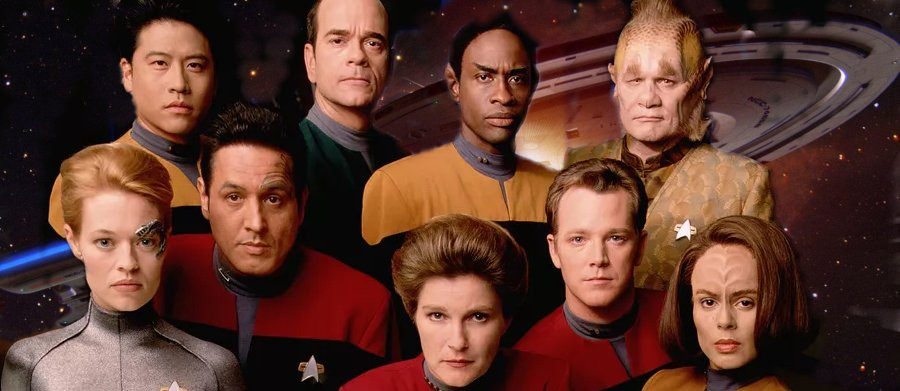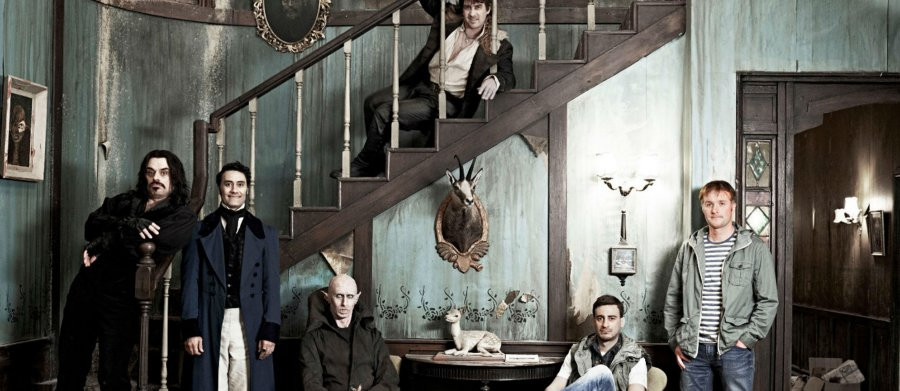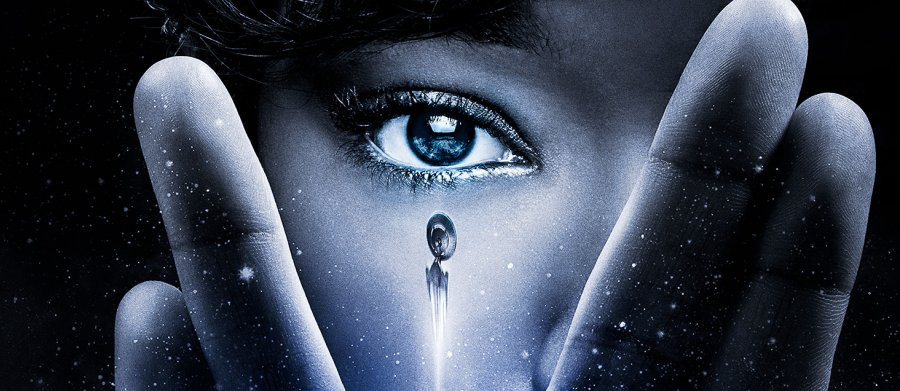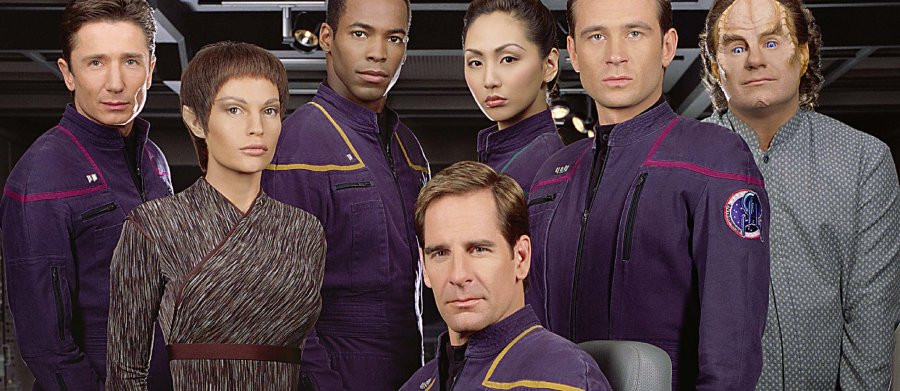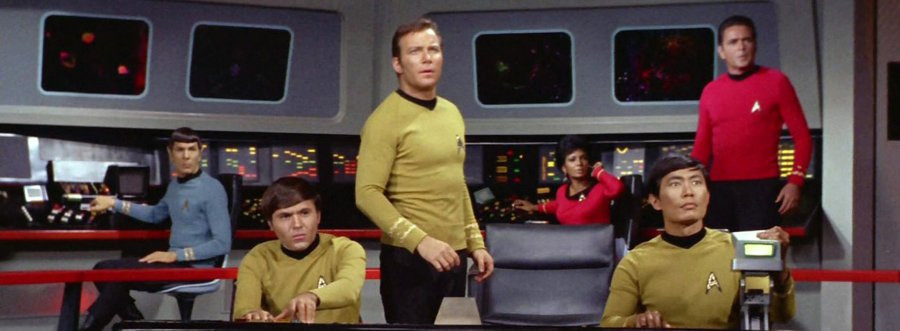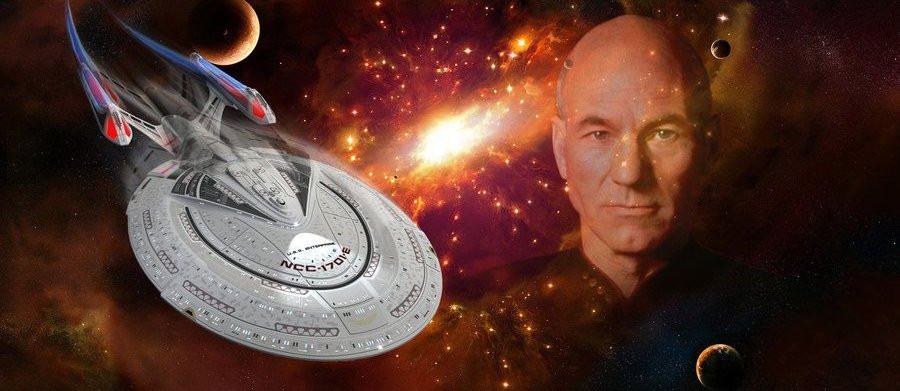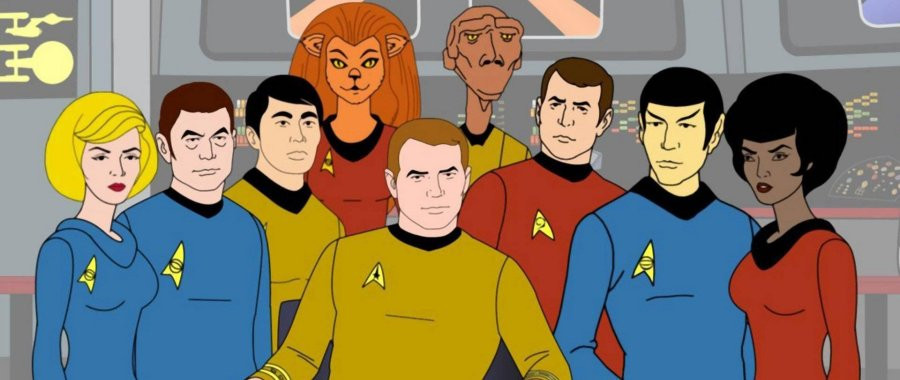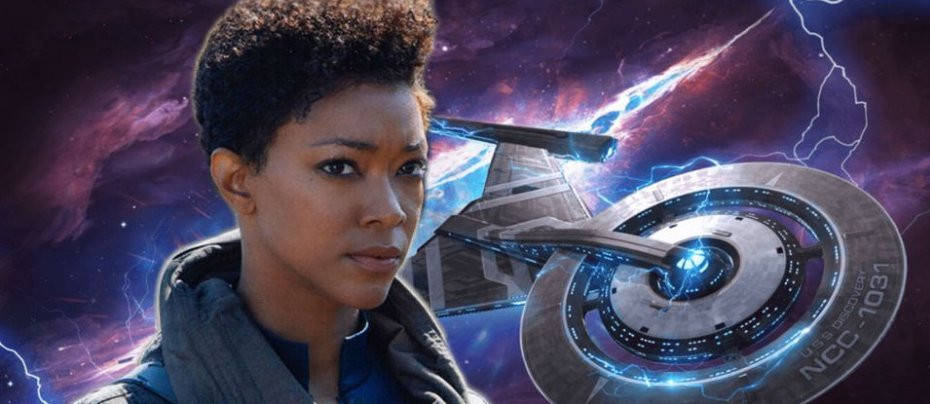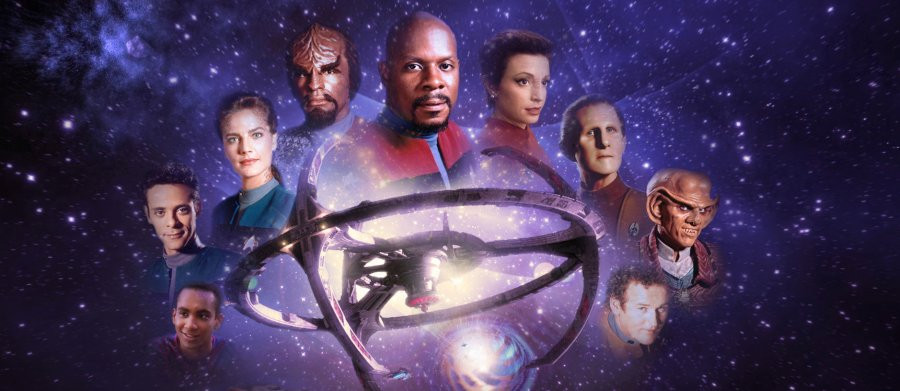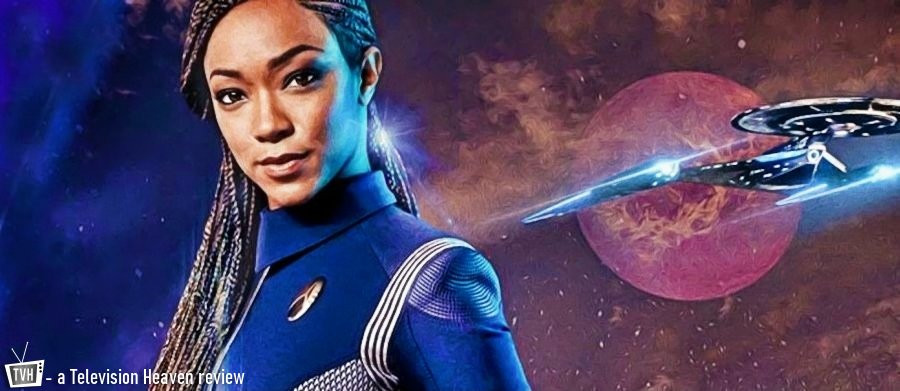
Star Trek: Discovery - Season 3
Star Trek has led viewers to the future for almost sixty years. From Star Trek: The Original Series to Star Trek: Picard, the franchise has created a future universe spanning three centuries, showing us a future that reaches towards the utopian ideal. It's not without its flaws, and not without its threats, but the general ethos of the Star Trek universe is one of hope against adversity.
In its first two seasons, Star Trek: Discovery explored one relatively small corner of this future, a few years in the middle of the twenty-second century, in the lead-up to the Original Series. This both inspired and constrained the series' creators, presenting them with a rich background of characters and situations on which to draw but also preventing them from creating a truly new story. At the end of the day, we know where the events of Discovery were bound to end up – contrast this to the reboot movies by J. J. Abrams and Justin Lin, which avoided this problem by creating a new timeline that didn't have to try to fit with established events.
Of course, there's a place for a prequel series, exploring the well-trodden ground of an established fictional universe. There's room to find out new details of half-seen events, learn more about characters and see parts of the universe we had previously missed. The upcoming series Star Trek: Strange New Worlds, which will focus on Captain Pike and Mr. Spock aboard the Starship Enterprise, will serve these needs. Discovery, though, always felt as though it was straining against the limits imposed upon it. At the end of the second season, the Starship Discovery, led by central character Michael Burnham (Sonequa Martin-Green), broke through these limits, travelling through time and space into the future of the Star Trek universe.
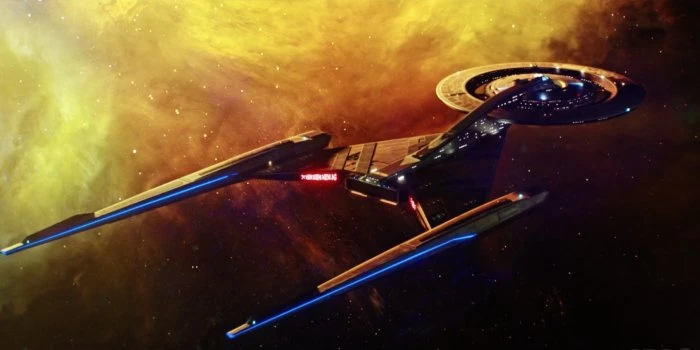
Season three takes us far beyond the era before explored by Star Trek. Yes, we've seen the occasional glimpse of the future beyond the 22nd to 24th centuries that make up the main setting of the franchise, but the further future is largely an untold mystery. Season three of Discovery goes well beyond this, with Burnham blasting through time and crash-landing on a desolate planet in the year 3188. It truly is a strange new world for her, with old certainties removed and new mysteries to explore. Finally, Star Trek: Discovery had moved beyond the familiar and into a whole new universe that it could map out.
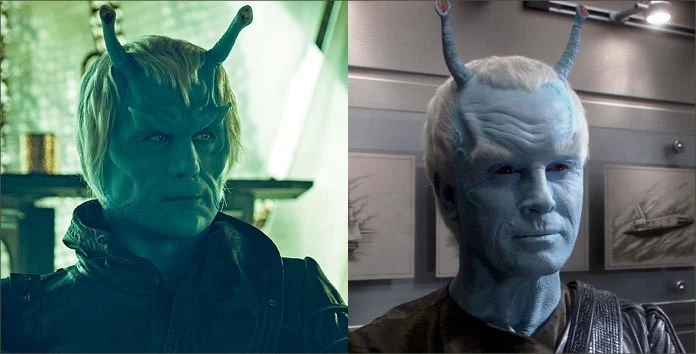
That's not to say that the third season moves into completely uncharted territory. There are far more familiar races and planets than there are new ones, but these have naturally moved on in new and surprising ways over the intervening nine hundred years. In some ways, this seems a missed opportunity, as although there are new worlds to explore, the season spends a great deal of time on recognisable ones. On the other hand, there seems little point travelling further into the future if not to see how the march of history has affected the world we know. This new period is one of strife, existing in the aftermath of the Burn: a cataclysmic event that occurred 120 years earlier, detonating almost all of the galaxy's dilithium, the material essential to the warp drive. Millions of lives were lost, and warp travel suddenly became almost untenably expensive. Against this background, history has moved on in unexpected ways. Incredibly sophisticated technology exists alongside grubby hands-on machinery, criminals wield as much power as governments and Starfleet is a much-maligned, ineffectual organisation. What's left of the fleet is trying desperately to keep the drastically diminished Federation together, after Earth and even Vulcan have left. The Andorians – the blue-skinned aliens who founded the Federation with those two worlds – have joined forces with the green-hued Orions, in a syndicate called the Emerald Chain which commands as much, if not more, respect and power than the Federation.
This gives the season a very Star Wars-feel, with the rough edges contrasting with the high-tech, colourful alien races (including updated versions of some very obscure creatures from films and series past) and the odd wretched hive of scum and villainy. There's also some incredible location shooting, most impressively the Icelandic vistas of the planet Hima. This stands in cool juxtaposition with Starfleet and the Federation headquarters when we finally get to see it, after Discovery spends a third of the season looking for its fleet. Starfleet/Federation headquarters is a huge habitat in deep space surrounded by Starships, which boast programmable matter, holographic personnel and all manner of technological wizardry. This is, though, pretty much the whole fleet, and it's clear that if they don't find another solution to the limits of warp travel soon, the Federation will be finished. Good thing a mysterious Starship with an experimental and classified drive has just turned up from the distant past...
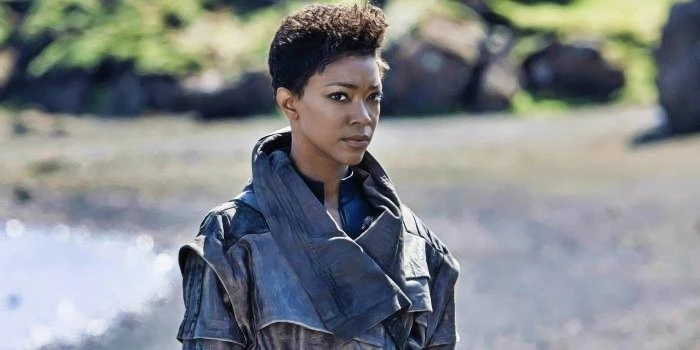
The series continues to focus on Burnham's experiences and her development. Arriving not only ahead of her ship in time, but in space, Burnham is without her crewmates for a year, surviving in this new world. While she is reunited with them in only the second episode, it's clear that her experiences have changed her – although in many ways it appears that they've only reinvigorated her borderline mutinous tendencies. Burnham spends the season coming to terms not only with life in a new time, but also deciding whether or not she truly belongs in Starfleet and aboard Discovery, and is often pit against her superiors. She's still the centre of the series' universe though, and isn't going to get over her messiah complex anytime soon when she still seems to be central to so many cosmic events.
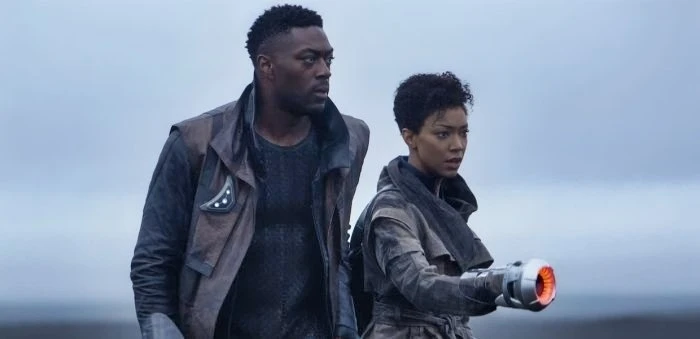
Burnham would spend the first episode, “That Hope is You, Part 1,” alone but for the fact that she crashes directly into the ship of one Cleveland Booker, a native of the thirty-second century. Played by David Ajala (Nightflyers, Supergirl), Book, as he is known, is an intriguing character and the most successful new element of this season. An edgy rogue with ties to the Emerlad Chain, he is also a deeply compassionate man who acts essentially as a galactic conservationist. He also has a handy superpower, a sort of telepathic empathy that means he can communicate with all sorts of life forms. Ajala gives a charming, classy performance and shares great chemistry with Martin-Green, and their growing relationship adds another element to Burnham's indecision over her life's direction.
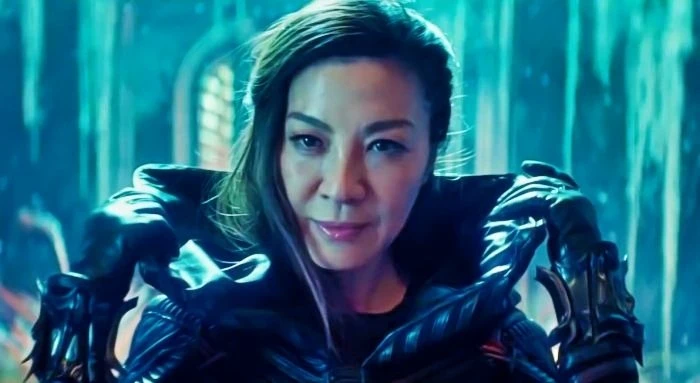
One of the central relationships in the season is that of Burnham and Michelle Yeoh's character Philippa Georgiou. For a little bit of catch-up, she is the evil parallel universe version of Burnham's old captain, empress of the Terran Empire who ruled over millions of alien slaves from aboard a terrifying death ship. She's decided to stick with the Discovery crew on their trip to the future, even though she can't stand any of them, in her desire to repair her relationship with Burnham. (Burnham betrayed Captain Georgiou, while Evil Mirror Burnham betrayed Evil Empress Georgiou, so they have some issues to work out.) While Georgiou had a lot of screentime in the previous two seasons and Yeoh was obviously having a ball playing her (while also bringing some real star quality to the series), she was a very two-dimensional character.
In season three, though, she gains some complexity, some subtler writing and some much needed wit, and becomes genuinely useful in this dangerous future. Once the crew find Starfleet, she begins to experience horrifying side effects of being separated from both her time and her native universe, which will inevitably kill her. This leads to the two-part story “Terra Firma,” in the ninth and tenth episodes, which write Georgiou out and send her on her way so that she can eventually star in her own series (planned for sometime but as yet unnamed or scheduled). Unfortunately, “Terra Firma” is a tedious slog through a world of moustache-twirling villainy and made me glad to see the back of the whole storyline.
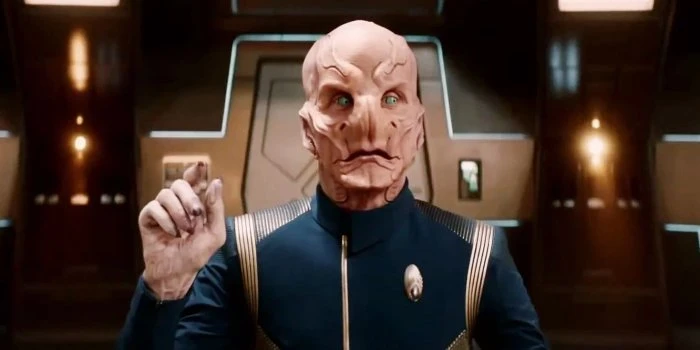
The Discovery itself is under the command of Saru (Doug Jones), finally officially captain of the ship (the only time we've had an alien as the central commanding officer of a Trek series). Saru has to adjust not only to his responsibility, but the ever further separation from his planet. Over the course of the season, though, he will be brought back to his people in a big way. Jones continues to put in an astonishingly good performance as Saru, proving himself to be the single best creature actor working today. We even get a contrived way for him to appear without alien make-up for a couple of episodes, which is a treat (no doubt for him as well). He has a somewhat fractious relationship with Starfleet's commander-in-chief, Admiral Vance. Played with clipped precision by Oded Fehr (The Mummy, Once Upon a Time), Vance is a solid commander in an increasingly difficult position, and while he's not always on the Discovery crew's side, it's a relief that he isn't yet another villainous admiral for the franchise.
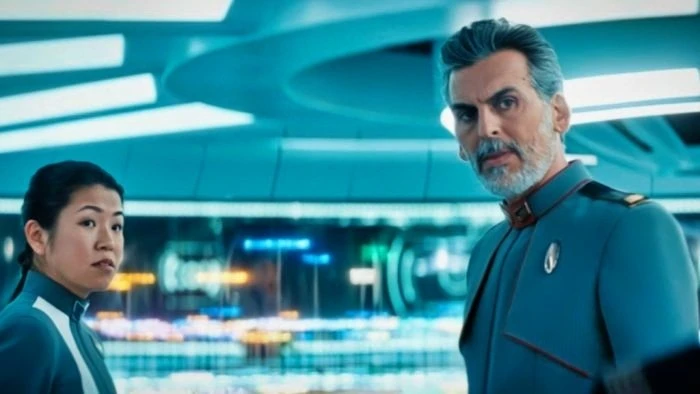
Both Saru and Vance end up at odds with Burnham for her increasingly unorthodox (read: insubordinate) approach, leading to her being busted in rank for a time. Saru then does the unexpected and promotes Ensign Tilly (Mary Wiseman) to First Officer, putting her in competition with her best friend and also pushing her to her limits. It's pretty illogical, but not really any different to Kirk becoming acting captain in the Star Trek film. Meanwhile, Paul Stamets (Anthony Rapp) and Hugh Culber (Wilson Cruz) heal their relationship, with Culber in particular finding a new peace following his impossible experiences in the previous seasons. Wiseman, Cruz and Rapp all give excellent performances as characters they've now got down perfectly.
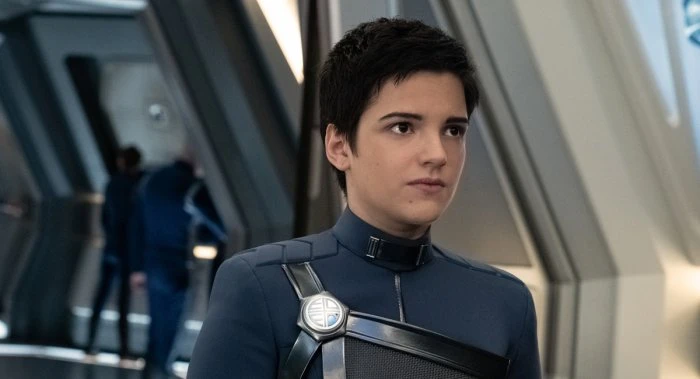
Stamets and Culber take under their wing a new recruit to the ship, Adira Tal, a human who, it is soon revealed, is hosting a Trill symbiont – one of the same long-lived creatures as Dax in Star Trek: Deep Space Nine. Played by Blu del Barrio in their breakthrough role, Adira is both an eager but gifted teen, and the host to a being who has lived hundreds of years and was previously a high-ranking Starfleet admiral. It's hard to believe that del Barrio had virtually no screen experience before this, given the heartfelt and assured performance they give. The very good fourth episode, “Forget Me Not,” takes Adira to the Trill home planet, a strong link to the often overlooked Deep Space Nine and a fine story of acceptance and open-mindedness. In an unusual twist, the host immediately prior to Adira was their partner, Gray Tal, and their strong bond means the ghost of the young Trill lives on within Adira's mind. This leads to some peculiar scenes of Adira conversing with someone no one else can see (and a lovely moment of Stamets giving thin air a piece of his mind). It's not a state of affairs that can be manageable forever, but for now, Ian Alexander (The OA) is so adorable as Gray it's hard to care.
What's particularly notable about this storyline is its underlying themes of identity. Del Barrio is a non-binary individual while Alexander is a trans man, and both play characters who are not perceived as their true selves by others (Adira being shunned by the Trill for being human, Gray being silent and invisible to everyone but Adira). It's a clear and powerful metaphor for the struggle of the trans community to gain acceptance and recognition, and exactly the sort of clever social commentary Star Trek has been putting in its stories since day one. There's a clear line to here from the race politics of “Let That Be Your Last Battlefield” (The Original Series, season three), the disability parable “As Loud as a Whisper” (Star Trek: The Next Generation, season two) and the gender and sexuality explorations of “The Outcast” (The Next Generation, season five) and “Rejoined” (Deep Space Nine, season four), among many others.
Indeed, Discovery's status as the most diverse Star Trek ever is even more deserved this season, with a remarkable mix of genders, sexualities and ethnicities making up the cast, a fine monument to the deliberate diversity of the crew of the original Enterprise, in which Gene Roddenberry made a point of having African American, Asian American and Russian characters at a time when many white American viewers would still be vilifying or discriminating against such people. It's an essential forward thinking that the franchise needs and is a true expression of the inclusivity that has been at the heart of Star Trek since the beginning.
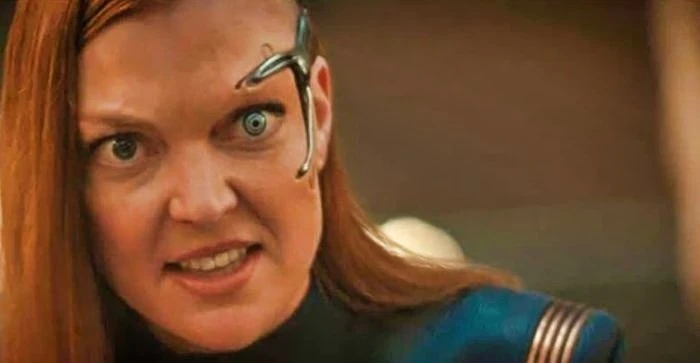
Beyond the main cast, many of the more minor characters get their chance to shine over the course of the season. Emily Coutts (Crimson Peak) impresses as the helm officer Kayla Detmer, clearly suffering from PTSD following her death-defying piloting of the ship to the far future (pretty much immediately after a huge space battle, too). Her storyline is resolved a little too easily but it's gratifying the writers are addressing the effects of these experiences on the crew. Rachael Ancheril (Killjoys) gets to be the central character of episode five, “Die Trying,” as Lt. Nhan reunites with members of her own people, the Barzans. Tig Notaro is somewhat overlooked as spiky engineer Jet Reno, but the scenes she does have are always a delight. We also have several new recurring guest stars, including, remarkably, legendary director David Cronenberg as the mysterious Federation official Kovich. Janet Kidder (Arrow, The Man in the High Castle) portrays Osyraa, head of the Emerald Chain, under some unflattering prosthetics, and while she gives a spirited performance, her character never really convinces as the series' principal villain. Bill Irwin (Law and Order: Special Victims Unit, Interstellar) is very impressive under even more prosthetics as Su'Kal at the end of the season.
The bulk of the season involves Burnham's quest to uncover the truth behind the Burn, alongside the fleet's general mission of rebuilding the Federation and defending planets from the Emerald Chain. Notable episodes include: episode three, “People of Earth” which has the ship visit the now isolationist planet Earth, who have Brexited from the Federation, and solve their problems like they're an alien planet of the week; episode seven, “Unification III” a pseudo-sequel to The Next Generation's “Unification” two-parter, which sees the ship visit Ni'Var, the planet formerly known as Vulcan, where Spock's efforts to reunify the Vulcan and Romulan peoples have borne fruit; and episode eight, “The Sanctuary,” which takes Book home to his own planet, a link in the Emerald Chain.
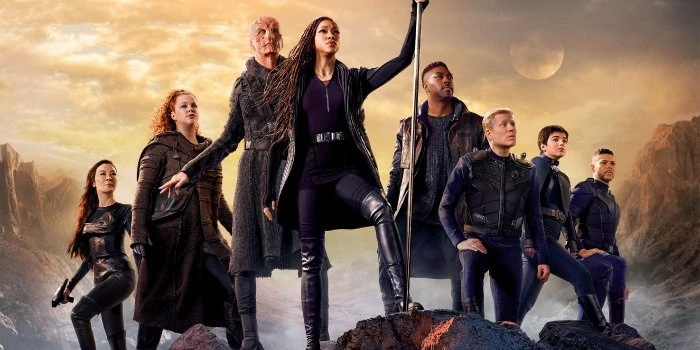
It all leads up to a suitably climactic finale, which answers most of the important questions while providing action and derring-do, as it should be. While the season is an intriguing glimpse at the further future of this familiar universe, there's still the nagging sense that we haven't done all that much discovering with Discovery, and there's a need to get out there and see some more of those strange new worlds. The series is still beholden to Burnham's story, and the scripts are often contrived to include her in the thick of things when another character would make more sense. Still, the third season of Star Trek: Discovery is the best yet in a series that gets better every year. It leaves off with a promise that season four should be something special.
Review: Daniel Tessier
Dan describes himself as a geek. Skinny white guy. Older than he looks. Younger than he feels. Reads, watches, plays and writes. Has been compared to the third, fourth, fifth, sixth, seventh, eighth, tenth, eleventh and twelfth Doctors, and the Dream Lord. Plus Dr. Smith from 'Lost in Space.' He has also had a short story published in Master Pieces: Misadventures in Space and Time a charity anthology about the renegade Time Lord.
Dan's web page can be here: Immaterial
Published on May 8th, 2021. Written by Daniel Tessier for Television Heaven.


